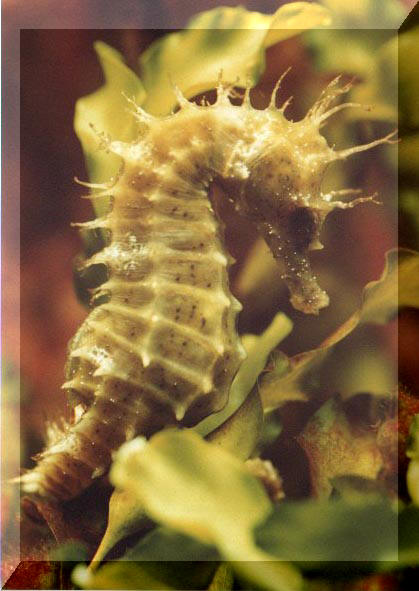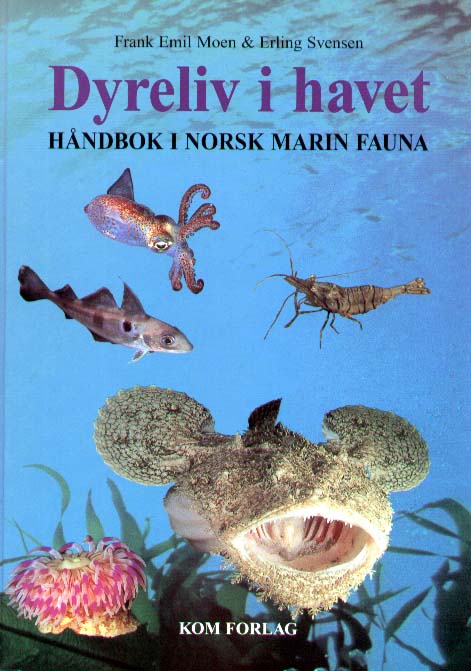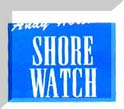|
|
| Homepage (Address) |
| Index |
| News |
| Main Links |
|
|
|
|
|
FORUM PAGE |
| MARINE
WILDLIFE
NEWS |
| Lion's Mane Jellyfish |
| King Scallop |
| Seahenge |
| Humpback
Whales,
Minke & Killer Whales |
| Osprey & Little Egrets |
| Grey Seal |
| Common Seals |
|
|
|
|
|
|
|
Vernal/Summer 1998 Glaucus |
|
Norwegian Marine *** Channel Islands *** South Australia *** |
|
(Underwater Windows) |
|
|
|
|
|
|
|
|
|
AGE GROUP 
7-14 years |
|
|
|
|
|
|
| Shorewatch
Newsletter
Volume 4 |
|
Andy Horton spends a year examining the biology and behaviour of the rock pool fish and other marine life. |
|
|
TORPEDO
38
August
1999
Electronic News Service ISSN 1464-8156
The Bulletin is designed to be viewed on Internet Explorer or Netscape
using medium fonts at a resolution of 800 x 600.
On August 11th most eyes will glance towards the celestial bodies, as in Cornwall and parts of the English Channel the Moon will be seen to move directly in front of the Sun. If the weather is favourable, viewers in a path about 100 km (62 miles) wide will be able to see a total solar eclipse. This path is known as the “zone of totality, or annularity”. Because the Earth is rotating whilst on its journey around the Sun, while the Moon revolves around the Earth, the narrow shadow of the Moon moves rapidly from west to east (at about 3,200 k.p.h. or 2,000 m.p.h.) across the Earth.
Zone of Totality
In a 13 km (8 miles) wide band in the centre of this zone the total eclipse will occur for about 2 minutes. This will be seen first over Cornwall south of Truro from 11.10 am BST, and will move rapidly across the English Channel to fall over the French coast between le Haura and Dieppe. The centre of the eclipse track falls over Swanpool Beach in south Falmouth. A total eclipse can be seen for a shorter period over the whole of Cornwall; at Padstow the duration will be just over a minute, during which the day will be turned almost as dark as night.
Partial Solar Eclipse
A partial eclipse occurs before and after a total eclipse, and can be seen over a much larger area. In Cornwall, the Moon will start to obscure the Sun at 9.55 am BST and the partial eclipse will last for over 2 hours. In the other parts of Britain a total eclipse will not occur, and in London the best that viewers will see will be a crescent Sun at 96% coverage. This is not nearly so impressive as a total solar eclipse; the remaining sunlight will still be far too bright to see the corona.
Weather 1998
In 1998 the weather at the beginning of August was awful with tornados filmed off Scotland. By the 11th it had cleared up.
Renewals:
Thank you for renewing your subscription as a member for 1999. No further Renewal Forms or Shorewatch Newsletters will be sent out to 1998 members.
However a form is available from the web site at:
Renewals 1999
New Members
Subscribers to Torpedo who wish to receive the written material on paper in the journal Glaucus and the Shorewatch Newsletter as a New Member can find the Application Form at:
New Members 1999
DIARY
In chronological order, the most recent events are at the top of the page. Events
open to the public, free or for a nominal charge only are included. Most Seminars need to be booked in advance
1999
Wembury
Bay Rockpool Rambles
Contact
Wembury Marine Centre Tel: 01752 862538
Leaflet from Devon Wildlife Trust Tel: 01392 279244.
VISITORS CENTRE
Coastal
Visitors Centre
Salisbury
Gardens
Dudley
Road
Ventnor
Isle
of Wight
PO38
1EJ
Tel:
01983 855400
EMail:
coastcent@iwight.gov.uk
The Centre covers many aspects of the coastal zone, which include coastal flora and fauna, marine and inter-tidal archaeology, coastal defence and particularly coastal instability issues.
CETACEAN WATCHING
The Whale Watch capital in Iceland is based at Husavik. Sights include Blue Whales, Humpbacks, Orca, Minkes and Sei Whales, dolphins, porpoises, plus Northern Bottle-nosed Whales.
The page for whale and dolphin spotting around Britain has not been prepared yet. If you are interested in marine wildlife, including marine mammals, and are planning a holiday in the UK, especially Scotland, it is work clicking on the image "SeaProbe" and having a look at the page:
Also
New
Quay Dolphin Monitoring Group, Cardigan Bay, Wales
http://www.ceinewydd.co.uk/
Dolphins,
Porpoises and Whales of the Moray Firth
http://www.highlanderweb.co.uk/dolphins.htm
Cornwall:
Dolphins are reported from the south coast of Cornwall regularly during
the summer. The Lizard peninsula is a good vantage point.
Shetland Isles:
Sumburgh Head, the southernmost trip is a regular spot for spotting
whales and dolphins as is the ferry to the islands.
For more cetacean reports click on the Shetland logo below:
Reports of marine wildlife from all around the British Isles, with pollution incidents and conservation initiatives as they affect the flora and fauna of the NE Atlantic Ocean.
20 July 1999 ORMER UPDATE
TORPEDO NEWS BULLETIN 37 IMPORTANT CORRECTION
The discovery of an Ormer, Haliotis tuberculata, on the Devon coast reported in the special Bulletin to members has now be found to be completely wrong. This was because of a mistake in identification by Andy Horton, which became apparent (Jan Light spotted it first) when the photograph can back from the processors, and then confirmed after the abalone died and even I could see, from the nacreous inside of the shell, it was blatantly not a European species of Ormer.
It has now been identified as an East African species Haliotis rugosa, Lamarck, 1822 (non Reeve, 1846). It was identified by Daniel L.Geiger, University of Southern California, Los Angeles, (thanks) from the same scanned images on the web site below.
The abalone/ormer is thought to have entered Richard's tank through the marine aquarium trade.
A Full Report is in preparation. If you want to look at the photograph of the abalone and check it out yourself and find some scanned images of a species that is not included in the popular books, go to the web page:
5 July 1999
Numerous people (at least 8) have been treated
in hospital for Lion's Mane Jellyfish,
Cyanea
capillata, stings of the north-east coast of England. This Arctic species
has blown inshore by the north-easterly winds
Lion's Mane Jellyfish
Jellyfish of various sizes, were seen between
the north and south piers at Roker, Sunderland, the majority were
purple in colour. At least one was roughly the size of a dustbin lid. More
information.
I think it is probably the highly venomous species Cyanea lamarckii. However, it is just possible that it is the even more deadly species the Lion's Mane Jellyfish, Cyanea capillata. AH.
BMLSS Moon & other Jellyfish page
![]()
Norwegian
Marine ***
These
web pages are recommended for photographs of Jellyfish
18 July 1999
Fishing and farming for the King
Scallop,
Pecten maximus, and the Queen Scallop, Aequipecten
opercularis
was banned off the west coast and islands of Scotland because of a build
up of a naturally occuring toxin in the flesh of the scallop. The ban covered
8000 square miles from the Outer Hebrides south to the islands of Jura
and Islay.
The effects of the toxin is called Amnesic Shellfish Poisoning and the symptoms when injested by humans include memory loss, headaches, vomiting, and even death in serious cases.
29 June 1999
Seahenge
Archaeologists from English Heritage planned
the removal of the Bronze Age (c. 2000 BC) circle of wooden posts (discovered
in November 1998, near Holme-next-the-Sea, Norfolk, when the sea eroded
the peat protecting the Monument) known as Seahenge (or Woodhenge) just
7 days after the Summer Solstice. The Monument is being dug up and moved
to the Flag Fen Centre near Peterborough, Cambridgeshire, to prevent it
being eroded and destroyed by the sea, and for further study.
Woodhenge
Site (with an excellent photograph and lots of information)
http://druidry.org/obod/text/news/woodhenge.html
BBC
News site:
http://193.130.149.130/hi/english/sci/tech/newsid_353000/353337.stm
23 June 1999
Three species of large cetacean were seen off
Sumburgh Head, the most southerly headland of the Shetland Isles. These
include two species of large baleen whales, with two Humpback
Whales, Megaptera novaeangliae, and five Minke Whales,
Balaenoptera
acutorostrata, together with the ominous presence of five predatory
Killer
Whales, Orcinus orca.
These large cetaceans were also reported from the same area on 5
July 1999.
Shetland Wildlife News
Web Site
BMLSS Cetacean Page
June 1999
An Osprey, Pandion haliaetus, is
hunting around Stanbury Point, Thorney Island, (the large peninsula in
Chichester Harbour, West Sussex) near where there is a roost of 10 Little
Egrets, Egretta egretta.
Havant Nature
Notes
19 June 1999
A Grey Seal, Halichoerus grypus,
was spotted in the fresh water reaches of the River Severn. Grey Seals
usually inhabit the sea where there is more food and visits to fresh water
are uncommon.
Welsh Seals
Grey Seals have been observed feeding on Sewin (Sea Trout) in the River
Tawe that enters the Bristol Channel past a weir at Swansea.
Welsh Report from Dr Michael Isaac.
3 June 1999
A pup has been born on the rookery of a half
a dozen Common Seals,
Phoca
vitulina, on the Pilsey Sands, Chichester Harbour, West Sussex. Seals
are uncommon between the Isle of Wight and Dover on the English Channel
coast, the total is only about 12.
Ralph Hollins
Nature Pages
REPORT FORMS
Official Marine Nature Conservation Review (JNCC) Report Forms
http://www.jncc.gov.uk/marine/mainfs.asp?page=/mit/recfrm.htm
FORUM
The Marine Life Forum is for observations and discussion items. The information of interest of other readers should be EMailed to:
EMail Glaucus@hotmail.com and marked "Forum" in the title of the message.
|
FORUM PAGE |

Photograph
by Espen Rekdal (Bergen) © 1999
Can anybody identify this small (under 20 mm) fish
found at a depth of 2 metres off the Norwegian coast?
EMail: Espen.Rekdal@ifm.uib.no
http://www.student.uib.no/~st00502/gobies.htm
Please also send the reply to: Glaucus@hotmail.com
Height = 13 mm
Can anybody identify this sea anemone found on the Cornish shore, SW England?
EMail: Simon Birch, simon.birch@virgin.net
Top of the Page
POPULAR PUBLICATIONS
August 1999
- Andy Horton's Shore Watch column in the Aquarist & Pondkeeper magazine:
NEW BOOKS

by F E Moen & E Svenson
ISBN 82-9082349-5The text is written in Norwegian, but an English version is planned. For sample photographs go the web site below:
NORWEGIAN MARINE WILDLIFE
Link to sample page of the book so you can see how the text is laid out.
BOOK REVIEWS
None
COURSES
2 year part time certificate in Higher Education in Marine Biology commencing September 1999 at Nottingham University.
Meeting on Thursdays 19.00 to 22.00.
Assessment is by course work. The course carries 120 University credits (Level 1) which is the equivalent to the 1st year of a degree. There are no formal entry requirements, just an interest in the subject. The course modules will cover:
Life on the seashore
Life in the sea
The diversity of life
The animal kingdom
The ecology of the sea
Marine ecosystems
Exploitation and conservation of the marine environment.
The contact for a leaflet, details, etc is Heather
Blackburn on 0115 951 3734,
ce-ugs@nottingham.ac.uk
or try URL= http://www.nottingham.ac.uk/cont-ed.
The fees are quite high since the government removed subsidies but reducable for low income earners.
Regards
Andy Colls
EMail:andy@collsj.freeserve.co.uk
FEATURED SPECIES
Sue Daly produces a Creature Feature every month on her web site.
We had orginally planned to bring this service to our members.
However, as Sue is already producing this series, I have decided to devote
my energies to producing other information.
|
|
|
Featured Species: Limpets,
Patella
PHOTOGRAPHS
The BMLSS presented the Annual Photographic Exhibition to celebrate World Oceans Day on 8 June 1999.
A similar exhibition is planned for the year 2000.
Print photographs should be sent in to Glaucus
House from March 2000. They could also be used on the BMLSS web sites.
However, if you have a large selection of your
own photographs, I would suggest that you should arrange your own exhibitions
at a Local Library or similar venue. We will help to advertise the event.
World
Oceans Day: Details of the BMLSS Exhibitions:
SEASHORE PHOTOGRAPHS
This is a simple project or request to members and readers of this Bulletin. It is to take pictures of the coast when you are next down on the shore. Even general views have value, but ideally we would like photographs of the shore showing the type of rock, topography and rock pools, dominant fauna, and information that cannot be described adequately by words on the Report Cards. The name of the particular coast should be included and the grid reference, if known. Print photographs can be included in Exhibitions and on the BMLSS Web Sites and electronic publications. Electronic images in *.JPG format can also be considered for the web site. Transparency photographs are the best choice of film but these cannot be transferred to the web pages at the present time, but these will be suitable in the future.
Pink Childing
Petrorhagia
nanteuilii
This
photograph with the out of focus first of the double-flowers is really
not up to scratch.
We
need a better photograph!
This small wild plant is found in only two known locations on the south coast of England. This very small colony is found on the tiny (about a square metre) remnant of sand dune on Shoreham Beach, West Sussex. It is a true member of the Pink family Caryophyllaceae. It is so vulnerable to trampling that is a surprise that the plant still exists. It is inconspicuous and diffcult to estimate its numbers. Its survival may be because other plants cannot colonise its natural habitat. Rabbits may present a danger in the future.
GATEWAY: LINKS TO OTHER SITES
The British
Marine Life Study Society Web Site has been included as an Encylopaedia
Britannica Recommended Site and included on the BBC On-line Internet
Guide.
| NEW | |
|
[ Prev 5 | Prev | Random | Next | Next 5 ] |
The Water Web Ring |
| Friends of the
Earth SSSI Navigator
http://www.foe.co.uk/wildplaces/intros/intro2.html |
Useful site to
identify SSSIs
If the URL has changed, please go to the FOE Homepage. |
| BIOSIS
and the
Zoological Society of London |
|
| Biodiversity News (JNCC) | Regular News Bulletins |
| U.K
ANGLER'S SHARKS,
SKATES AND RAYS |
For anybody interested in British sharks, this site is a must. |
CoralRealm |
"A coral reef marine life education web site with 1000 fish, sharks and rays in a searchable database." |

The Museum of Paleontology University of California, Berkeley |
Probably
the best site on the Internet for biological information about groups of
organisms
Click on the Cowrie to go to the site |
| Aquarium Net | Internet Publication for aquarists with extensive marine coverage. Very Good. |
 |
|
| Fishing News Homepage | Recommended, especially for books. |
| Contains information
on seals and
photographs. |
|
| Seaweb | Links and News Bulletins |
| ENN (Environmental) News *** | News and campaigns |
| Planet Ark (Reuters) | News |
| Sea Mammal Research Unit | Update on seal populations,
diets,
telemetry etc. |
| Profusion Search Method | One of the best Search
methods for
environment and serious information. Multiple Search Engines. It is a good tip to used the Advanced features like typing in a Phrase. |
| Capt.
Tom's Guide to New England
Sharks, USA |
Really useful stuff on shark recognition. |
| BMLSS GATEWAY 1 |
| BMLSS GATEWAY 2: Britain & Europe |
| BMLSS GATEWAY 3: America & the Rest of the World |
| UK DIVING INFORMATION |
| DIVER MAGAZINE |
| BRITISH SUB-AQUA CLUB |
SPONSORS ARE INVITED FOR THE BMLSS WEB SITE FOR 1999
THE MINIMUM STARTING FUNDS REQUIRED FOR THE
PLANNED BMLSS 2000 SITE IS £386 PER YEAR
WEB SITE PAGE LINKS
| BMLSS (England) HOMEPAGE |
|
|
|
|
|
| BMLSS (Facebook) |
|
|
|
|
|
|
Some of the images may not display if you have changed your directory for downloaded files.
|
Use these links if your are familiar with the scientific classifications of marine life |
Compiled on Netscape Composer, part of Netscape Communicator 4.61

